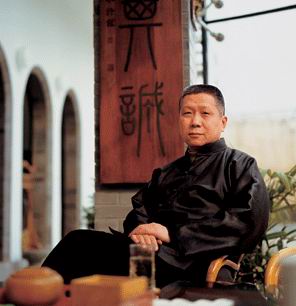
30 years ago, you and the Chinese said that Huanghuali, everyone will be very upset. The famous pear I knew when I was a child was Yantai Pear and Laiyang Pear in Shandong. The former was the latter, because I was from Shandong, and I was always impressed when I talked about Shandong Pear. I grew up in Beijing and knew Beijing’s Jingbai Pear. , big pear, Jingbai pear has a different fragrance, big pear juice is sweet.
Huanghuali was recognized as a name for wood in the society. After the publication of Mr. Wang Shizhen’s "Luxury of Ming Dynasty Furniture", the book was published in 1985 and became widely known in the 21st century. As the last fine material of the Ming and Qing Dynasties, Huanghua pear was not called huanghuali at the beginning. After the middle of the Qing Dynasty, the flowers were warned, and the new pears and pears appeared in the second place, forcing the flower palm to be renamed Huanghua Pear.
The name of Huanghua Pear is very literary and beautiful, and it has a good color and a sweet taste. It is difficult to replace it with another name. Later, Hainan huanghuali, Vietnamese huanghuali, and now African huanghuali and Dayehuanghuali are borrowing or overdrafting the reputation of ancient huanghuali.
Not long ago, the trip to Vietnam saw many towering trees of huanghuali (MAI DOU LAI Vietnamese) and mahogany (XA CU Vietnamese). Most of them are more than 30 meters high and 1.5 meters thick. It is very spectacular. I took photos with many big trees. To show respect for such timber. In the Ming and Qing dynasty huanghuali furniture, I have seen a person with a width of 70 cm or more and a length of more than 4 meters. At that time, I couldn't think of the tree appearance. Today, I have a feeling of seeing each other. The Chinese people have been worshipping the huanghua pears since ancient times. In Hanoi, they are all road trees in Hue. Many of them are numbered, responsible for people and preventing illegal logging. Is it a tree fortunate? Still the tree is unfortunate?
The huanghuali tree, which has made extraordinary contributions to ancient Chinese furniture, has been praised by generations of literati. Taiji is no, only 20 years of commercial tide, making it a caged beast in the circus. Although the value has doubled, but the freedom has been lost, it is incomparable with the glory created by the ancestors three or four hundred years ago. One heaven, one underground, good and good!
The polypropylene composite cap for plastic infusion container comprises of the pullâ€tab outer cap, inner cap, and synthetic medicalâ€level polyisoprene cushion; among which, the materials for the inner cap and outer cap are the imported medicalâ€level polypropylene, complying with the FDA rules and passing the USP CLASS VI test; the synthetic medicalâ€level polyisoprene cushion can be made from the imported product on the request of user. The inner cap of the composite cap will contact with liquid medicine directly to ensure the quality; whereas the cushion will be helpful to prevent penetration and seal whilst infusing the liquid medicine, and the outer cap plays a role to prevent bacterium.
The composite cap is produced in the clean plant, with the overall plant reaching to Class 10,000 and some for Class 1,000,000. The main working procedures, such as the injection molding, inspection, cleaning, assembly and inner packing and so on, are designed and processed as per the
cleanliness requirements at the partial level of Class 100, which passes the GMP onâ€site certification and complies with the cleanliness
requirements of high capacity injection medicine.
The facilities involved by production, test and inspection of composite cap are available, with strict control and management to be conducted in the whole process of production, free of plasticizing agent, loading agent and lubricating agent, and free of absorption or transfer when contacting with liquid medicine, neither the pyrogen and soluble matter, thence such facilities may ensure the product quality.
The polypropylene composite cap for plastic infusion container is mainly used for nonâ€PVC softâ€bag infusion and polypropylene plastic bottle infusion.
PP Composite Cap For Plastic Infusion Container
Pp Cap,Plastic Cap For Infusion Container,Pp Cap For Plastic Infusion Container,Caps For Infusion Containers
YANGZHONG HONGYUN BOTTLE CAPS MAKING FACTORY , https://www.hongyunyz.com